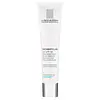What's inside
What's inside
 Key Ingredients
Key Ingredients

 Benefits
Benefits

 Concerns
Concerns

 Ingredients Side-by-side
Ingredients Side-by-side

Water
Skin ConditioningAlcohol Denat.
AntimicrobialHydroxyethylpiperazine Ethane Sulfonic Acid
BufferingGlycolic Acid
BufferingDiisopropyl Adipate
EmollientPropylene Glycol
HumectantPentylene Glycol
Skin ConditioningCitric Acid
BufferingPPG-26-Buteth-26
Skin ConditioningPEG-30 Glyceryl Cocoate
EmulsifyingPEG-40 Hydrogenated Castor Oil
EmulsifyingSodium Hydroxide
BufferingP-Anisic Acid
MaskingCapryloyl Salicylic Acid
ExfoliatingTetrasodium EDTA
Polyquaternium-10
Water, Alcohol Denat., Hydroxyethylpiperazine Ethane Sulfonic Acid, Glycolic Acid, Diisopropyl Adipate, Propylene Glycol, Pentylene Glycol, Citric Acid, PPG-26-Buteth-26, PEG-30 Glyceryl Cocoate, PEG-40 Hydrogenated Castor Oil, Sodium Hydroxide, P-Anisic Acid, Capryloyl Salicylic Acid, Tetrasodium EDTA, Polyquaternium-10
Water
Skin ConditioningC12-15 Alkyl Benzoate
AntimicrobialGlycerin
HumectantOctocrylene
UV AbsorberNiacinamide
SmoothingOctyldodecanol
EmollientDimethicone
EmollientButyl Methoxydibenzoylmethane
UV AbsorberVinyl Dimethicone/Methicone Silsesquioxane Crosspolymer
Aluminum Starch Octenylsuccinate
AbsorbentTerephthalylidene Dicamphor Sulfonic Acid
UV AbsorberPotassium Cetyl Phosphate
EmulsifyingDrometrizole Trisiloxane
UV AbsorberPEG-100 Stearate
Stearyl Alcohol
EmollientGlyceryl Stearate
EmollientEthylhexyl Triazone
UV AbsorberTriethanolamine
BufferingGinkgo Biloba Leaf Extract
Skin ConditioningPhenylethyl Resorcinol
AntioxidantPoloxamer 338
EmulsifyingAmmonium Polyacryloyldimethyl Taurate
Emulsion StabilisingDisodium EDTA
Capryloyl Salicylic Acid
ExfoliatingCaprylyl Glycol
EmollientXanthan Gum
EmulsifyingFerulic Acid
AntimicrobialPhenoxyethanol
PreservativeParfum
MaskingWater, C12-15 Alkyl Benzoate, Glycerin, Octocrylene, Niacinamide, Octyldodecanol, Dimethicone, Butyl Methoxydibenzoylmethane, Vinyl Dimethicone/Methicone Silsesquioxane Crosspolymer, Aluminum Starch Octenylsuccinate, Terephthalylidene Dicamphor Sulfonic Acid, Potassium Cetyl Phosphate, Drometrizole Trisiloxane, PEG-100 Stearate, Stearyl Alcohol, Glyceryl Stearate, Ethylhexyl Triazone, Triethanolamine, Ginkgo Biloba Leaf Extract, Phenylethyl Resorcinol, Poloxamer 338, Ammonium Polyacryloyldimethyl Taurate, Disodium EDTA, Capryloyl Salicylic Acid, Caprylyl Glycol, Xanthan Gum, Ferulic Acid, Phenoxyethanol, Parfum
Ingredients Explained
These ingredients are found in both products.
Ingredients higher up in an ingredient list are typically present in a larger amount.
Capryloyl Salicylic Acid comes from salicylic acid, the famous acne-fighting BHA.
It usually goes by a more common name of LHA, or lipohydroxy acid.
Like salicylic acid, this ingredient is a chemical exfoliant that can help break down the oil in your pores and reduce inflammation.
Though studies for LHA do show it to be less effective than salicylic acid. To be fair, salicylic acid is the reigning monarch of acne treatments.
However, a study from 2009 found LHA to be comparable to BPO, making it a good alternative for people with sensitive skin. Another study of 14 patients found a significant decrease in comedones after using LHA.
Another pro of LHA? It is less irritating than salicylic acid due to its large molecule size.
Large molecules cannot penetrate skin as well, so they are gentler on the skin. LHA is much less penetrative than salicylic acid.
An in-vitro study (not done on a living organism) found only 6% of LHA penetrated past the statum corneum compared to 58% of salicylic acid. An in-vivo (done on a living organism) analysis revealed ~17% of LHA was still present in the top layer of skin after 4 days, versus ~9% of salicylic acid.
Interestingly, a study from 2008 found LHA comparable to another famous acid, glycolic acid.
This study found about 10% of LHA is as effective as 20-50% of glycolic acid in treating hyperpigmentation and fine-lines.
Hydroxy acids have been found to stimulate skin protein, lipids, and thermal thickening. This may have anti-aging benefits.
Learn more about Capryloyl Salicylic AcidWater. It's the most common cosmetic ingredient of all. You'll usually see it at the top of ingredient lists, meaning that it makes up the largest part of the product.
So why is it so popular? Water most often acts as a solvent - this means that it helps dissolve other ingredients into the formulation.
You'll also recognize water as that liquid we all need to stay alive. If you see this, drink a glass of water. Stay hydrated!
Learn more about Water